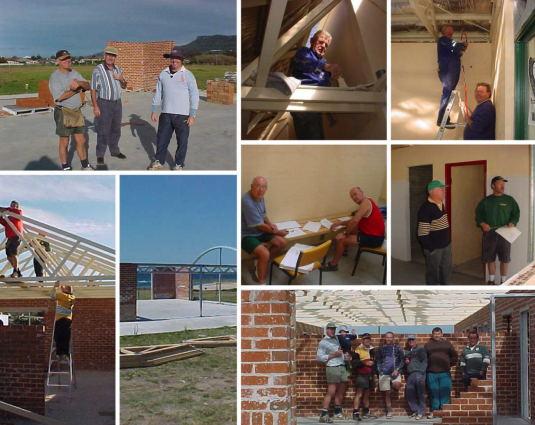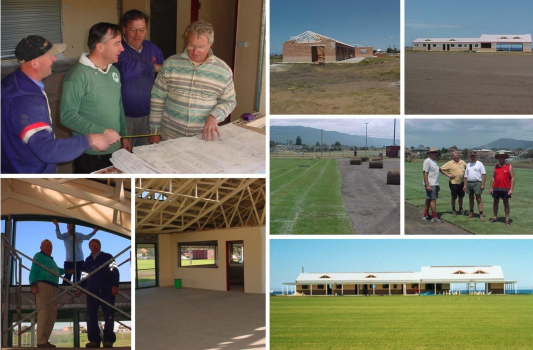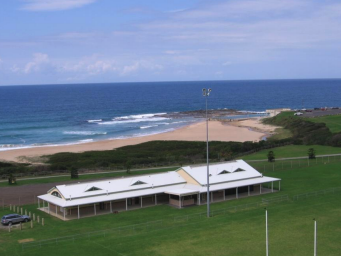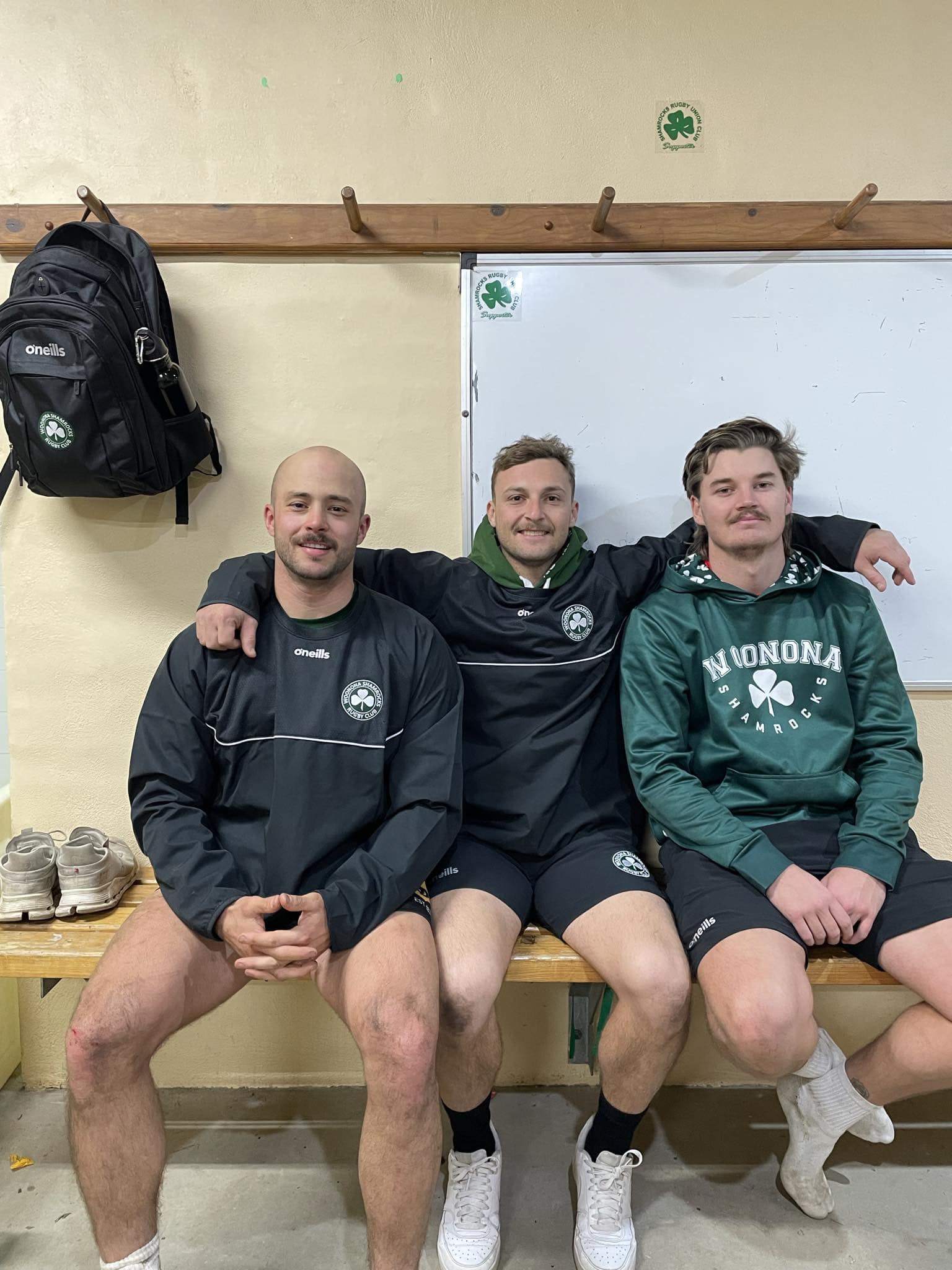The Journey to Ocean Park: Building a Home for Shamrocks Rugby
The journey to Ocean Park actually commenced in the late 80s. The club identified that the operations of the club at Nicholson Park would not be sufficient to sustain the growth of rugby for the Shamrocks. After consultation with the then Alderman David Campbell, the club met with Wollongong City Council (WCC) in February 1990 to discuss a long term lease on Ocean Park. However it was evident that any relocation would have had to be funded entirely by the club if it was proposed as a single sport facility. Consequently a multi sport facility was proposed but no progress was made.
A grounds sub committee was formed in the early 90s to explore the alternatives including improving Nicholson Park or even re-locating to Bulli Showground. The issue dragged on and in 1998 the club engaged Prof Paul Patterson to facilitate the development of a business plan for the club to progress. During those sessions it was clear that the existing facilities were not conducive to attracting and maintaining players, supporters and sponsors. The relocation option was considered to be too costly and with the problems already encountered with previous attempts the club sought to develop Nicholson Park instead and a development application was lodged.
This application was met with much objection from the Progress Association which in hindsight proved instrumental in the re-location of the club. It was obvious to all that Shamrocks wanted to relocate, the community wanted Shamrocks to relocate, but WCC could not find a way for it to happen. It was then that the comment was made to Council “If Council put down the slab, Shamrocks will build the facility”. And so the stalled relocation process was restarted.

The relocation process commenced.
A Building Committee was formed comprising of Bert Roodenrys, Tom Ellicott, Ian Chapman, and Mark Dandridge. Bert and Mark did the original “heavy lifting” in respect of meetings with WCC and negotiations with them. Chappo was very active in the grants side of things and general admin assistance as required while Tom was there to provide good guidance and legal advice as and when needed. Dereg Breslin joined the team to provide the financial management.
The first hurdle was the agreement of the overall plan of the building where Bert tried to get a 2 story clubhouse on the site however that was obviously never going to be accepted by WCC as they wanted to replicate the Woonona Soccer Club amenities building across the road as the architectural plans were ready to go. In 1999 new submissions were submitted to the WCC with the current layout and grant applications were made to the Department of Sport and Recreation. There were a number of significant hurdles in the construction of this building.
1. The building site was an old tip with gas drainage issues and there were limits to where the building could be located.
2. The club was not experienced in commercial building practices and was required to satisfy Council’s stringent code of Best Practice and Occupational Health & Safety Standards for the construction.
3. The club had no proven financial record at fundraising to the level required to fund the building.
WCC quantity surveyors costed the Shamrock component of the building at $380,000. WCC designed the building to incorporate special features to counter the issues of methane gas build up and identified the current site as being the only possible area in the site on which a building could be erected. The club obtained the services of Camarda & Cantrill Pty Ltd who in conjunction with Paul Griffiths Building Consultants were to advise, assist and review procedures so that the construction would be undertaken in accordance with relevant OH&S Standards. All members involved in the construction were required to undertake the appropriate inductions and obtain green card qualifications.
Fundraising became paramount as the club sought finances from wide and varied activities such as Sportsmen’s Lunches, house demolitions, golf days, Buy-a-Brick and Golden Membership drives. Members were also asked to lend money to the club. Mark Dandridge was able to use his expertise in the building industry to source materials and fittings sourced from various businesses at reduced costs. The project was registered under the work for the dole scheme with the first stage being the erection of the chain wire fence around the perimeter of the site.
Eventually the club could demonstrate that it had sufficient financial backing to complete the project through cash reserves built up from fundraising activities, pledges for in kind support from tradespeople and suppliers and money’s borrowed from members, particularly several long serving stalwart members who contributed a loan of $50,000 to the project. Accordingly, construction commenced on 10 October 2001 with WCC contractors starting on the slab construction. It was not until March 2002 that the club could commence with its component of the project. In the meantime behind the scenes work was continuing with a successful application for Grant funding from the Department of Sport and Recreation resulting in an additional $30,000.

The construction process had begun.
At the end of the 2002 season all brickwork had been completed and bagging of the walls commenced. Most of the structural work for the roof had been completed with plumbing and electrical work to be started shortly after. During the 2003 season the major construction component was completed with only a few minor items requiring work before the building could be handed over. It was hoped that the playing surface would be ready for the 2003 season but unfortunately this was not to be the case. The last matches played at Nicholson Park were on Saturday 6 September 2003 against Bowral. On 3rd October 2003 Shamrocks welcomed the Canadian Rugby Team to the Rugby World Cup for the first function in the new clubhouse. Shortly afterwards the venue was used again to celebrate 3rd Grades minor and major premierships of that year, which coming after three consecutive grand final losses was a big celebration.
2004 saw the club host its first official games on Ocean Park with the season opener played against the old foe – Vikings. It was a successful day with wins in First and Second Grade and a 7 all draw in Third Grade after a 10 all draw in the Old Boys curtain raiser game. In 2005 the club erected the four light poles on the field and secured further grant funding of $20,000 to assist in this. In 2006 season railings were installed outside the touchlines. The Club facility was officially opened on March 2006 by the Lord Mayor, Alex Darling. The ticket office (storage shed) was built in 2010 and in 2016 the electronic scoreboard was installed. The perimeter fencing and gates were replaced and upgraded in 2017. In 2018 the lights were significantly upgraded. All of these projects were funded by club fund raising efforts, contributions from club stalwarts and the winning of NSW Government grants, with local MLA Ryan Park and his predecessor Dave Campbell assisting greatly in the processes.

The Ocean Park Rugby Complex Home of the Woonona Shamrocks. Located near Collins Rock, the site where Captain James Cook first attempted landing in Australia in 1770 (The breaking surf prevented his landfall….but maybe if he had had a Bulli Boat Crew on board he might have made it ashore! It has been alleged that as he surveyed the coastline from his pinnace he said “the area would make a damn fine site for a rugby field”.)
In 2018 a Commonwealth Government grant was awarded through the office of local member Sharon Bird to help restore the field surface. The club is indebted to the Building/Relocation Project team for the massive work required to bring Ocean Park Rugby field to fruition and to the many members who have helped to get the complex to the standard that is seen in 2019. However, Ocean Park is still an ongoing project. It is not complete – there are still many small projects that could be initiated to make it a much better sporting venue. Future Committees will need to maintain what has been achieved while continuing to plan and develop the facilities for the betterment of all associated with the club. What can be made of this facility is dependent on the Shamrocks of the future.
Excerpt from “50 Years of Rugby: The Woonona Way” by Mick Traynor, documenting the history of the Woonona Shamrocks Rugby Union Football Club from 1970 to 2019. Reproduced with permission from the author.
To read more of the book, you can download it here.








